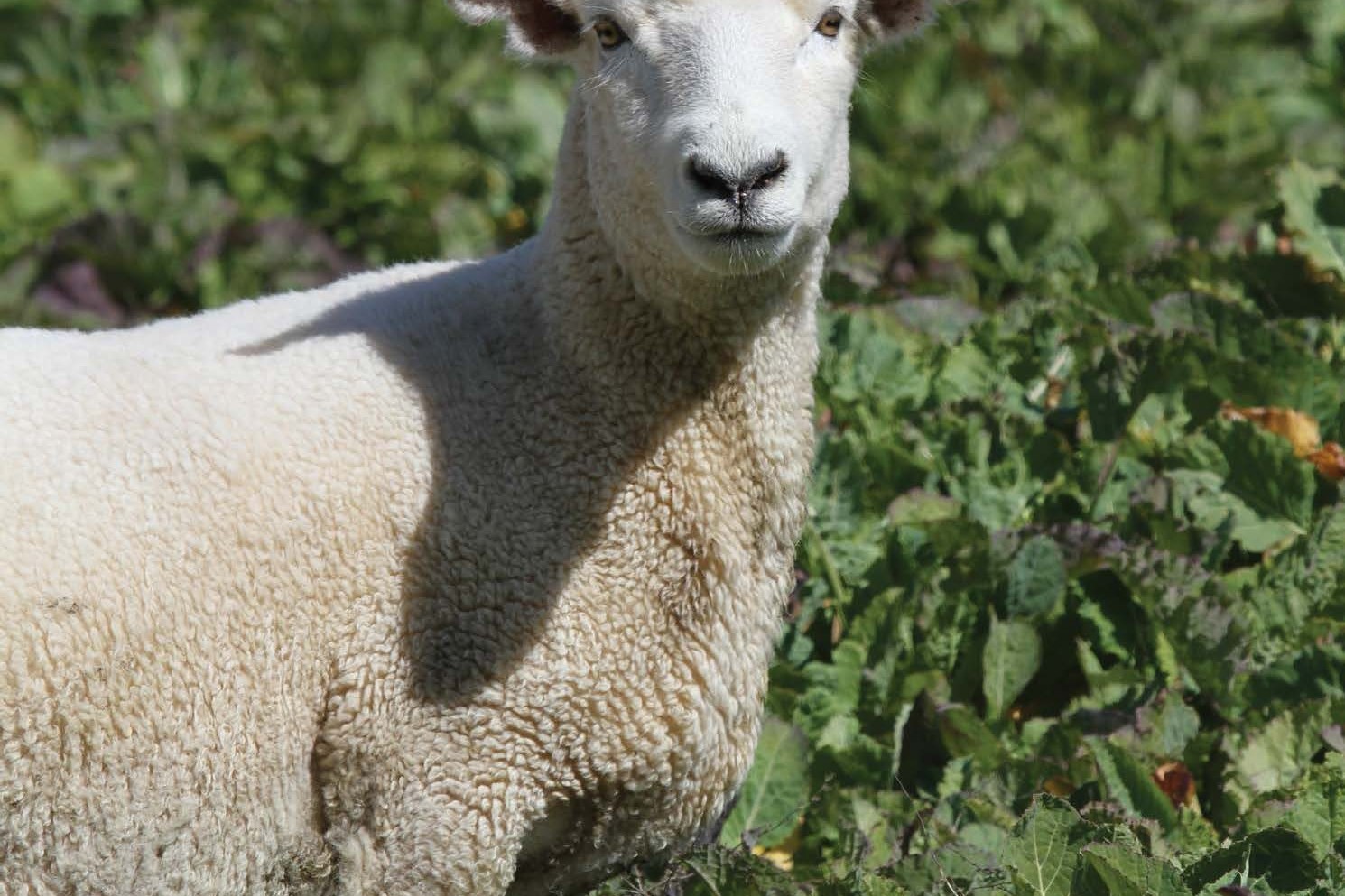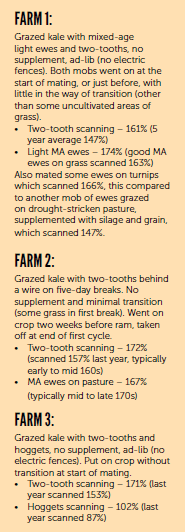Mating on kale riskier but promising
Grazing kale at mating shows promise on Southland farms, vet Andrew Cochrane writes.

Grazing kale at mating shows promise on Southland farms, vet Andrew Cochrane writes.
The importance of nutrition at mating is well known and along with ewe liveweight/condition is arguably the most important factor affecting reproductive performance.
Nothing much has changed here – studies in the 1980s at Ruakura showed good ovulation rates required adequate mating weights and a rising plane of nutrition. This is further defined as the static and dynamic effects of liveweight.
The static effect dictates that heavy ewes have higher ovulation rates and more lambs than light ewes. The dynamic effect relates to flushing, such that ewes gaining weight have higher ovulation rates than those with low or no weight gain. This is especially true for light ewes where the dynamic effect is greatest. Conversely, weight loss over mating will result in a reduction in ovulation rate.
The dry autumn we experienced down south this year is a great example of the impact lower ewe weights and poorer nutrition at mating can have. Scanning rates are back in many instances 10%, with some greater than 20% down on better years. This can be attributed primarily to the lack of quality feed available at mating for flushing and poorer ewe condition overall.
Northern Southland has suffered two dry autumns in a row, with the most recent being more severe and more wide spread. These conditions have also been compounded by difficulty in securing processing space for lambs and the result has been a lack of quality feed to flush ewes on. This has resulted in southern farmers searching for options to flush, or even just maintain, ewes over the critical mating period.
Typical options include buying supplements such as sheep nuts, barley or balage, each of which come with their own set of pros and cons. Reducing demand is another way to improve feed availability and this often includes selling store lambs, but to have any real impact this is a decision best made earlier in the season.
Planting crops specifically for the autumn is becoming more widespread in Southland and local seed reps report increased interest this spring from sheep farmers following our recent dry autumns. While various options are available, of recent significance is the use of brassicas, specifically kale, for mating ewes.
Kale is a common winter crop in Southland but is typically not grazed until late May or beyond. However, with recent dry autumns some clients have grazed it successfully during ewe mating. As I understand it this is not a new practice, having also been used successfully in places such as North Canterbury and the Wairarapa. But it’s new for Southland.

Three of our clients mated ewes on kale this season and all had very good results despite a challenging season (see sidebar).
These results have been in the face of significant feed shortages this autumn, as already mentioned most farms in our patch had scanning back 5-15% of normal. Putting my veterinary hat on, I have some concerns with some of the management, but regardless these results show great promise as an option to help ensure reproductive success in the face of autumn feed shortages.
Using kale as a feed source for flushing over mating is more than just a bank of quality feed. It is also essentially parasite and fungus-free, both of which can have significant impacts during this critical period in the farming calendar. However, it does have some management and health considerations that need to be respected.
Your approach to these will depend on your attitude to risk, but the following should be considered:
Transition The rumen needs time to adapt to a new diet, if stock are not transitioned well they can go backwards which will have a negative impact on the reproductive performance. Ideally stock should be transitioned on to the kale over 10 days and be fully transitioned on to the crop at least 10 days prior to the start of mating. Transitioning of the rams should also be a consideration.
Iodine Brassicas are well known for their goitrogenic effects on iodine uptake and on top of this they are also particularly low in iodine content. Iodine has been shown to have an impact on ovulation rates (twinning) and therefore supplementation of iodine should be considered whenever brassicas are fed during mating.
Health issues associated with brassica feeding Polioencephalomalacia (also known as thiamine/vitamin B1 deficiency) can occur on brassicas due to high sulphur content. Photosensitivity (scald) can occur when brassicas (particularly rape) are fed before they are mature. Nitrate toxicity can occur from grazing brassicas, especially in overcast conditions and if plants have been under stress. SMCO toxicity (‘redwater’) can be a problem but is more of an issue in mature crops, particularly those that have started flowering.
Cost Whilst a gross margin analysis is beyond the scope of this article, there are obvious costs associated with growing a brassica crop. However, the farmers I talked to in Southland were not growing any extra crop than they typically would for winter feed. They have simply chosen to graze the crop earlier, at a time when pasture is still growing and there are fewer environmental impacts from winter grazing, a win-win.
Lambing covers Assuming you end up with fewer dries and more twins, have you got the extra feed required to meet this extra demand? If you aren’t growing extra crop, do you have a contingency if winter is particularly long/ harsh and what impact will this have on your lambing covers?
Is this a silver bullet to better scanning? Maybe… the experience of these farmers, despite riskier management, was certainly positive. I’m sure there are others amongst you that have used brassicas during mating and I’m interested in hearing your results. If you are keen to share, send me a message on my EweFirst Facebook page. Happy farming everyone.
- Andrew Cochrane is a vet with NS Vets, Riversdale, Southland.




